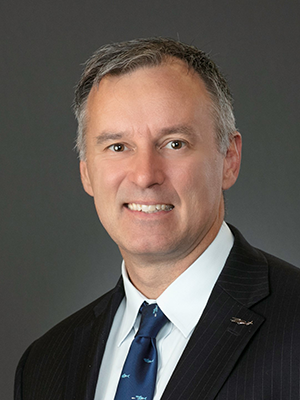 Dr. Andreas (Andy) Bernhard is the Director of Aircraft Design at Sikorsky Aircraft. He is responsible for all technical aspects related to the design of blades, rotors, transmissions, airframes, and propulsion systems, across all platforms.
Dr. Andreas (Andy) Bernhard is the Director of Aircraft Design at Sikorsky Aircraft. He is responsible for all technical aspects related to the design of blades, rotors, transmissions, airframes, and propulsion systems, across all platforms.
Previously, Dr. Bernhard was the Chief Engineer for the CH-53K King Stallion providing overall strategic leadership for all technical activities of the CH-53K program, including design development, integration and test, and product improvement roadmaps. Major accomplishments included first flight, first production contract award, and international debut at the Berlin Airshow. From 2013-2015, Dr. Bernhard was the Chief Engineer for the S-97 RAIDER™, leading the team from critical design review to first flight. From 2008-2013, he was the Chief Engineer for Sikorsky Aerospace Services responsible for all aspects of Aftermarket Engineering.
Dr. Bernhard graduated from the University of the Witwatersrand (Johannesburg, South Africa) in 1992 with a B.Sc. (aeronautical engineering) and from the University of Maryland in 2000 with a Ph.D. (aerospace engineering). He holds five patents, has authored 12 peer-reviewed journal articles and over 20 conference papers. He has won numerous awards including the Vertical Flight Society Technical Fellow (2021), the Lockheed Martin Nova Award (2016), and the American Helicopter Society’s Grover Bell Award (2016).
Dr. Bernhard is an avid private pilot who flew his Cessna 182 from Florida to Oshkosh Air Venture with his then 4-year-old son, Andy4, in 2021 (and again in 2022). He is a recreational (formerly competitive) cyclist and just restarted playing competitive water polo.
 William Bissell was an instrumental member of the Lockheed Martin Aircraft Corporation for almost 39 years. He was an engineer and designer on such projects as Skunkworks, the U-2R, the A-12, the SR-71 and the XST. Bissell also designed and built the JetStar, a 10-passenger personnel transport for the Air Force which was later used as a Presidential plane.
William Bissell was an instrumental member of the Lockheed Martin Aircraft Corporation for almost 39 years. He was an engineer and designer on such projects as Skunkworks, the U-2R, the A-12, the SR-71 and the XST. Bissell also designed and built the JetStar, a 10-passenger personnel transport for the Air Force which was later used as a Presidential plane.
Born in Thomasville, Georgia in 1926, he grew up in Griffin, Georgia and enlisted in the U.S. Air Force, serving two years beginning in 1944. Bissell graduated from the University of Maryland in 1952 with a Bachelor of Science Degree in Aeronautical Engineering. He was hired by Lockheed Martin Aircraft Corporation in Burbank, California upon graduation. In order to learn the Lockheed Design System, Bissell was sent to an introductory school; after finishing, he began work with the T-33 detail group.
William S. Bissell worked with this group until late 1953, when he was transferred to the Preliminary Design Group and was instituted to direct and keep files on individual air planes of all types.
Bissell was assigned to work in the Lockheed Advanced Development Project, known as the “Skunkworks,” as a designer in 1954. His first project was the U-2 under Kelly Johnson. When the project began in 1954 and the plane was first flown in 1955. Later, Bissell and his group reengineered the U-2. This newly reengineered plane, known as the U-2R, was able to carry more fuel and reach a higher altitude than the original. Bissell also designed and built the JetStar, which was a 10-passenger personnel transport for the U.S. Air Force and was later used as a presidential plane.
During 1959 and 1960, Bissell was a wing designer on the A-12, a Mach 3.2 photographic aircraft. He was a designer in the Wing Group for the SR-71 from 1962 to 1964 and they built this plane entirely out of titanium. In 1968, he assisted in designing the forward fuselage of the L-1011 cockpit area, and in 1975 Bissell helped design the wings for the XST (Have Blue) prototype. He was also the Wing Group Engineer for the exterior configuration design of the F-117A.
After almost 39 years at Lockheed, William Bissell retired in 1991, and he and his wife moved to Bigfork, Montana. Bissell passed away on January 11, 2009, in Kalispell, Montana. Bill is survived by his wife of 57 years, Mary Bissell of Bigfork, three sons, seven grandchildren, and three great grandchildren, as well as many other relatives and friends.

Sean Bond is the Chief Executive Officer of ISS Facility Services, Inc. headquartered in San Antonio, Texas. ISS Facility Services, Inc. is a division of ISS A/S. Bond will also serves as the Country Manager for ISS in the United States under the ISS Group structure. Prior to joining ISS in March 2010, Bond served as President of Platform Solutions for BAE Systems, a global aerospace and defense business headquartered in New York. In that role, he was responsible for leading a business providing high integrity power & control systems for aircraft and ground vehicles across the world. Before joining BAE Systems, Mr. Bond was with Bell Helicopter Textron in Fort Worth where he was the Program Manager for the V-22 Osprey program, a revolutionary tilt-rotor aircraft for the US military. Previously, Mr. Bond was the Program Manager for the JSF119 Joint Strike Fighter Engine Program with Pratt & Whitney Military Engines, where he had responsibilities that also included business development and management.
Mr. Bond holds a bachelor’s degree in aerospace engineering from the University of Maryland and studied aerospace at the United States Naval Academy. Through his career, Bond has completed executive programs in business management at Oxford University, the Wharton School of Business, Rensselaer Polytechnic Institute, and the Thunderbird School of Global Management. A native of New Jersey, Mr. Bond has lived in Florida, Texas, and upstate New York where he was Corporate Chairman for the Juvenile Diabetes Research Foundation (JDRF) and an ardent supporter of the Jericho Project to solve homelessness. He enjoys traveling, cultural studies, skiing, and photography. He is married with a family of four children and Murphy, a chocolate Labrador retriever named after a certain Irish beverage.

Kevin G. Bowcutt is Senior Technical Fellow and Chief Scientist of Hypersonics with the Boeing Co., in Long Beach, Calif. Bowcutt has been with Boeing (formerly Rockwell International, North American Aircraft) since 1986 and was named a senior technical fellow by Boeing in 1998. Much of his professional career has involved research in and development of air breathing hypersonic vehicles; including missiles, aircraft, and space launch vehicles.
In 2015, Bowcutt was named to the National Academy of Engineering for development and demonstration of air-breathing hypersonic vehicles and the implementation of design optimization methods. In addition, he is an AIAA Fellow and a Fellow of the Royal Aeronautical Society.
Notable accomplishments include: developing the modern viscous optimized hypersonic waverider; serving in technical leadership roles on the National Aero Space Plane program; leading a project to flight test scramjet engines by launching them from a light gas gun; originating the concept and optimizing the design of the USAF/DARPA X 51A scramjet powered waverider vehicle; leading a team that designed an air breathing reusable launch vehicle concept; and working on the Space Shuttle Columbia accident investigation simulating wing aero thermal structural failure.

Charles Brink is currently the Air Force Research Laboratory’s X-51A Scramjet Engine Demonstrator program manager. Mr. Brink has served in this capacity since program inception in 2003, and he has led the $246M effort through both Preliminary and Critical Design Reviews and is currently coordinating the efforts of the Boeing/Pratt Whitney Rocketdyne X-51 Consortium with the Air Force Flight Test Center, Naval Air Warfare Center, and NASA as the X-51A prepares for flight.
Mr. Brink’s acquisition career has spanned over 27 years as both an active duty USAF officer and USAF civil servant. Mr. Brink is a retired Lieutenant Colonel with 21 years active duty acquisition experience. He served as a design engineer in the Ground Launched Cruise Missile, Tri-Service Standoff Attack Missile, and National Aerospace Plane System Program Offices. His test experience includes serving as the F-15E Seek Eagle program manager at the 46 Test Wing, Eglin AFB FL during the F-15E’s initial fielding. Then Major Brink oversaw the certification of over 20 different munitions, missiles, and electronic warfare pods on the F-15 Strike Eagle. Major Brink’s team was awarded the 1991 Bernard P. Randolph Award and the 1991 Secretary of Defense Superior Management Award. Mr. Brink was assigned to the Warner Robins Air Logistics Center and was the first ever Air Force Test Center Test Representative assigned to WR-ALC. In that capacity Mr. Brink represented all three of the then existing Air Force Test Centers (AF Flight Test Center, AF Development Test Center and Arnold Engineering and Development Center) as an advisor to the Commander on all test related issues while overseeing all ground and flight test activities at the logistics center. At Headquarters Air Force Materiel Command, then Lt. Colonel Brink served in various posts in the Directorate of Requirements, the Engineering and Manufacturing Directorate, as well as serving as the Executive Officer to the Vice Commander.
Mr. Brink holds a B.S. in Mathematics from Villanova University, a B.S. in Aerospace Engineering from the University of Maryland, and a master’s in business administration from Georgia College. He is a graduate the Defense Systems Management College Advanced Program Manager’s Course and is a Certified Level III Acquisition Professional in Test and Evaluation, Program Management, and Systems Planning, Research, Development, and Engineering. His military decorations include the Joint Service Commendation Medal and the Air Force Meritorious Service Medal with Four Oak Leaf Clusters.
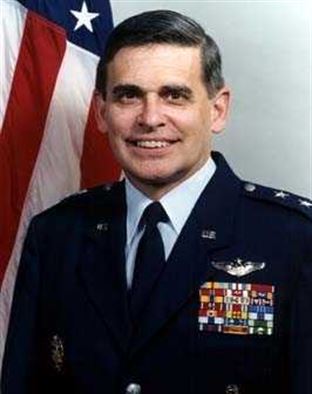
Gary L. Curtin is senior vice president with the Defense Group Inc. In 1998, Curtin retired with the rank of major general after 33 years of service with the U.S. Air Force. His military career included duties with intercontinental ballistic missile operations, command and control, military intelligence and political/military affairs. Curtin was assigned in 1989 as the senior U.S. military representative to the Strategic Arms Reduction Talks (START) in Geneva, Switzerland, and was instrumental in negotiating the START I Treaty signed in 1991.
The general entered the Air Force in 1965 as a distinguished graduate of the University of Maryland Air Force Reserve Officer Training Corps program. He has served in a variety of ICBM operations, intelligence, and politico-military affairs positions during his career. He flew 105 combat missions as an airborne targeting officer on the Airborne Battlefield Command and Control Center during the Vietnam War. Later, he commanded the 90th Strategic Missile Wing, which consisted of 200 Minuteman III ICBMs deployed in Wyoming, Nebraska, and Colorado. During his command, the wing began deploying the new Peacekeeper ICBM. He subsequently served as representative of the chairman, Joint Chiefs of Staff, on the delegation that successfully negotiated the Strategic Arms Reduction Talks (START) Treaty with the former Soviet Union. Subsequently, he directed the Joint Staff's contribution to the negotiation of the START II Treaty, the Open Skies Treaty, and the Chemical Weapons Convention. He also served as director of intelligence for U.S. Strategic Command.
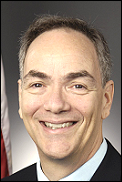
Mr. Michael B. Deitchman was appointed to the Senior Executive Service on 9 September 2001. Mr. Deitchman’s career with the Navy spanned over 41 years, starting as an engineering student trainee from the University of Maryland Co-operative Education program in February 1971.
In his last position prior to retirement from Federal Senior Executive Service, Mr. Deitchman was the Deputy Chief of Naval Research, Naval Air Warfare and Weapons Science and Technology Department at the Office of Naval Research, responsible for the Navy’s aircraft, air and surface weapons technology programs as well as Science and Technology Program Manager for the Sea Strike IPT Future Naval Capability. He managed an annual budget of over $250M with over 200 performers and supervised 55 civilian and contractor employees including two Naval Officers. Much of his departments portfolio focus was on the “next big thing” with disruptive technology related to unmanned air systems technology, intelligent autonomy, hypersonic weapons, advanced adaptive cycle turbine propulsion, and fighting at the speed of light with Innovative Naval Prototypes for the EM Rail Gun and High Energy Lasers.
He conceptualized, organized, managed and successfully championed a complex portfolio of basic research through applied technology in the key areas of unmanned air systems, sea based aviation, high-speed weapons, aircraft propulsion, directed energy and electromagnetic weapons. Aviation related examples of basic research portfolio included autonomous intelligent control that has transitioned to industry for unmanned aircraft autopilots and sponsored the design of an intelligent computer interface for controlling air traffic around the deck of an aircraft carrier. Advanced and applied technology portfolio examples included sense and avoid technology research, successful UCAV design and flight test in collaboration with DARPA, autonomous landing period designator for Unmanned Rotary Wing aircraft shipboard operations, heavy fuel engines for Small Tactical Unmanned Aircraft Systems (STUAS), sponsored development of new aircraft flight control laws intended to reduce pilot workload and aide a fully automated precision approach and landing technique for manned and unmanned carrier launched aircraft. Through his leadership, Sea Based Aviation was designated a National Naval Responsibility, ensuring the continued Don investment in basic research of Naval Aviation Science and Technology for future generations of scientists and engineers.
He supported NCIS and FBI initiatives that were unprecedented and uniquely successful in identifying, mitigating, and exploiting the ways in which our potential foreign competitors have been aggressively targeting the Navy’s most sensitive research and development efforts.
Collateral duties with the Office of the Secretary of Defense included Chair of the Directed Energy Technology Focus Team and Co- Chair of Technology Readiness Assessments for Naval Aircraft Programs.
He proposed and successfully championed to Senior Navy Leadership the Autonomous Aerial Cargo Utility System (AACUS) Innovative Naval Prototype. The INP has successfully demonstrated the objective of developing goal directed supervisory control by a field operator, including autonomously avoiding obstacles while finding and landing at an unprepared landing site in dynamic conditions.
Prior to his last assignment, Mr. Deitchman was the Director of the Strike Technology Division at the Office of Naval Research where he served as Chair of the Autonomous Operations Future Naval Capability portfolio of advanced research for unmanned air, surface, and undersea systems. Collateral duties with the Office of the Secretary of Defense included Chairs for both the Air Platforms and Weapons Technology Area Reviews and Assessments (TARAs).
Mr. Deitchman served in numerous positions during his 30 years of civilian service with the Naval Air Systems Command. Prior to his promotion to the Senior Executive Service, he served as the Deputy Assistant Commander for the Shore Station Management Group. He also served as the Naval Air Systems Command Team Leader for the Competitive Sourcing Enterprise Team from 1998 through 2001.
Mr. Deitchman was the Associate for Integrated Systems Test and Evaluation and Head of the Ship Suitability and Air Traffic Control & Landing Systems Division in the Test & Evaluation Engineering Department at the Naval Air Warfare Center Aircraft Division from 1996 to 1998. Managed the conduct and performed technical review of all Navy ship based tactical and rotary wing aircraft, and unmanned air vehicle flight test aboard ships capable of aircraft operations including shipboard certification of landing aides and launch and recovery systems.
Mr. Deitchman was detailed to the Navy’s A-12 IPT in 1994, where along with a select group, conducted independent analysis of the A- 12 trial merits of claim. He was awarded the Department of Navy’s Meritorious Civilian Service Award in 1996 for his achievements in the analysis of the A-12 aircraft’s Total System Performance, Low Observables, and flying qualities and performance.
Mr. Deitchman returned to Naval Air Warfare Center Aircraft Division Patuxent River in 1989 where he held positions as Chief Engineer for the Simulation, Control, and Technology Department at the Manned Flight Simulator and Deputy Program Manager for F/A-18 Systems Engineering Management and Foreign Military Sales. In 1981, Mr. Deitchman transferred to the Naval Air Systems Command Headquarters where he served as Assistant Program Manager for Test and Evaluation of the F/A-18 and V-22 programs, Chief Engineer for the E-2C and C-2A aircraft programs from 1983 through 1986, and as Head of the Carrier Aircraft Class Desks from 1986 through 1989. While serving as Chief Engineer for the E-2C and C-2A Class Desks, he managed complex integration and flight-testing of the Group I and II radar and T56-A-427 engine upgrade of the E-2C aircraft as well as unique FMS requirements for Egypt and Singapore.
After graduating in 1973 with a bachelor’s of science in aerospace engineering, Mr. Deitchman returned to the Naval Air Test Center as a senior flight test engineer. He participated directly in all phases of the acquisition process ranging from the concept and demonstration phases of the YT-34C and YAV-8B aircraft programs, technical evaluation of the high angle of attack characteristics of the A-4/TA-4, EA- 6B and A-7 aircraft, and full scale engineering development of the AV-8B and TAV-8A aircraft.
Mr. Michael Deitchman has a Master’s of Science degree in Systems Management of Research, Development, Test & Evaluation from the University of Southern California, completed graduate study in aerospace engineering from Pennsylvania State University and is a graduate of the US Naval Test Pilot School. He is a graduate of Naval Air Systems Command Senior Executive Management Development Program and The Federal Executive Institute’s Leadership for a Democratic Society Program. Mr. Deitchman is also a member of the Acquisition Professional Community with Level III DAWIA certification in Program Management, Test and Evaluation, Science and Technology Management and System Planning, Research, Development and Engineering. Mr. Deitchman has received many awards for achievement and performance, including the Department of Navy’s Highest Civilian Honor the Distinguished Civilian Service Award as well as the Meritorious and Superior Civilian Service Awards. Mr. Deitchman received the Glenn L Martin Award for contributions to the field of Aerospace Engineering and was inducted into the University of Maryland, Department of Aerospace Engineering Academy of Distinguished Alumni in November 2007.
Mr. Michael Deitchman holds memberships in the American Institute of Aeronautics and Astronautics, American Helicopter Society, International (AHS-I), Federal Executive Institute Alumni Association, USN Test Pilot School Alumni Association, Navy League and Directed Energy Professional Society. He has just recently elected to the AHS-I Board of Directors for a two-year term as the Southeast Regional Director, and is also a member of the Executive Advisory Board for the Pennsylvania State University Vertical Lift Research Center of Excellence.
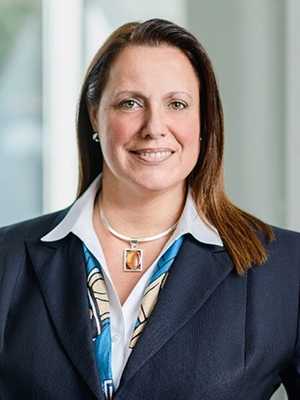 Flavia De Veny is a General Management and Operations Executive who has successfully managed numerous divisions and businesses—from ground up builds to turnarounds—over the past 30 years. Her work has resulted in extensive revenue growth, numerous new market penetrations, and large-scale company expansions.
Flavia De Veny is a General Management and Operations Executive who has successfully managed numerous divisions and businesses—from ground up builds to turnarounds—over the past 30 years. Her work has resulted in extensive revenue growth, numerous new market penetrations, and large-scale company expansions.
As President & CEO of Camaco-Amvian (P&C), Ms. De Veny managed a $500+M global seating solutions auto supplier with nine manufacturing facilities and 3,200 employees spanning six countries. She effected a wholesale organizational turn-around positioning the company for prudent and profitable growth in eighteen months. Among her many accomplishments, she built the company’s entire executive leadership team, increased enterprise value by $200M in three years on a $500+M P&L, achieved an adjusted 3-year EBITDA CAGR of 82%, and re-built and improved vital customer and supplier relationships.
Previously, Ms. De Veny served as Assistant General Manager of Cosma Body Assembly Michigan, launching a 200,000 sq. ft. manufacturing facility from groundbreaking to full production in twelve months. She was also a founding executive of Martinrea International.
Ms. De Veny holds an MBA from the Wharton School, a master’s degree in mechanical engineering from Oakland University, and a bachelor’s degree in aerospace engineering from the University of Maryland. Ms. De Veny has served on boards for Camaco, LLC and Oakland University’s School of Engineering and Computer Science. She is a member of the Original Equipment Suppliers Association and the Private Directors Association.
She was named to Automotive News 100 Leading Women in the North American Auto Industry in 2010 and 2020.
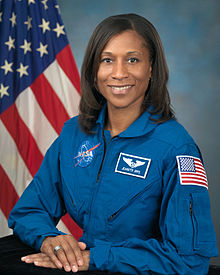
Jeanette J. Epps was selected in July 2009 as one of 14 members of the 20th NASA astronaut class. She graduated from Astronaut Candidate Training that included intensive instruction in International Space Station systems, Extravehicular Activity (EVA), robotics, physiological training, T-38 flight training, and water and wilderness survival training. She earned a bachelor of science in physics from LeMoyne College in 1992, as well as a master of science and doctor of philosophy in aerospace engineering from the University of Maryland in 1994 and 2000, respectively.
She was assigned to her first spaceflight, Expedition 56/57, scheduled to launch in May 2018 to the International Space Station. Her training included scientific and technical briefings, intensive instruction in International Space Station systems, spacewalk training, robotics, T-38 flight training, and wilderness survival training.
As a NASA Graduate Research while at UMD, Dr. Epps authored several highly cited journal articles describing her research involving extensive testing of composite swept-tip beams, comparative analysis of analytical models and experimental data for shape memory alloys, and the application of shape memory alloy actuators for helicopter rotor blade tracking. Dr. Epps was subsequently a Technical Specialist in the Scientific Research Laboratory at Ford Motor Company where she developed magnetostrictive actuators to reduce vibrations that enter a vehicle via the suspension control arms. Dr. Epps also investigated automobile collision location detection and countermeasure systems, which resulted in the granting of a U.S. Patent.
In 2002, Dr. Epps joined the Central Intelligence Agency (CIA) where she spent more than 7 years working as a Technical Intelligence Officer. She received multiple performance rewards for her work at the CIA where she is a three-time recipient of the Exceptional Performance Award (2003, 2004, and 2008). Dr. Epps is a member of AIAA and the Society for Science and the Public. Dr. Epps is the first Ph.D. graduate of the University of Maryland’s Department of Aerospace Engineering to become a NASA Astronaut.
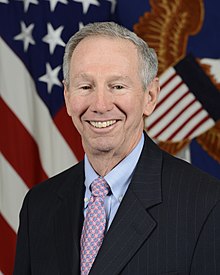
Michael D. Griffin began his duties as the 11th Administrator of the National Aeronautics and Space Administration (NASA) on April 14, 2005, where he led the NASA team and managed its resources to advance the U.S. Vision for Space Exploration. His tenure with NASA ended in 2009.
Prior to being nominated as NASA Administrator, Griffin was serving as Space Department Head at Johns Hopkins University's Applied Physics Laboratory in Laurel, Md. He was previously President and Chief Operating Officer of In-Q-Tel, Inc., and served in several positions within Orbital Sciences Corporation, Dulles, Va., including Chief Executive Officer of Orbital's Magellan Systems division and General Manager of the Space Systems Group.
Earlier in his career at NASA, Griffin served as associate administrator for exploration from August 1991 through March 1993, becoming chief engineer in March 1993 through January 1994. He also served as deputy for technology at the Strategic Defense Initiative Organization. He has been an adjunct professor at the University of Maryland, Johns Hopkins University and George Washington University, where he taught courses in spacecraft design, applied mathematics, guidance and navigation, compressible flow, computational fluid dynamics, spacecraft attitude control, astrodynamics and introductory aerospace engineering. He is the lead author of more than two dozen technical papers, as well as the textbook, "Space Vehicle Design."
A registered professional engineer in Maryland and California, Griffin is a member of the National Academy of Engineering and the International Academy of Astronautics, an Honorary Fellow of the American Institute of Aeronautics and Astronautics (AIAA), a Fellow of the American Astronautical Society, and a Senior Member of the Institute of Electrical and Electronic Engineers. He is a recipient of the NASA Exceptional Achievement Medal, the AIAA Space Systems Medal, and the Department of Defense Distinguished Public Service Medal, the highest award given to a non-government employee.
Griffin received the following degrees: a bachelor's degree in physics from Johns Hopkins University; a master's degree in aerospace science from Catholic University of America; a Ph.D. in aerospace engineering from the University of Maryland; a master's degree in electrical engineering from the University of Southern California; a master's degree in applied physics from Johns Hopkins University; a master's degree in business administration from Loyola College; and a master's degree in civil engineering from George Washington University. He is also a certified flight instructor with instrument and multiengine ratings.
Source: www.nasa.gov/about/highlights/griffin_bio.html
 Bastian "Buz" Hello was an active management consultant to Rockwell International Corp and member of the aerospace community until his passing in 2011. His distinguished career at Rockwell included management of strategic military aircraft programs as well as making important contributions to America's space efforts. He was also responsible for pre-launch preparation and launch support for six Apollo missions that included three successful moon landings.
Bastian "Buz" Hello was an active management consultant to Rockwell International Corp and member of the aerospace community until his passing in 2011. His distinguished career at Rockwell included management of strategic military aircraft programs as well as making important contributions to America's space efforts. He was also responsible for pre-launch preparation and launch support for six Apollo missions that included three successful moon landings.
Hello served as president of AIAA from 1989 to 1990. "His leadership, both of the Institute, and of the aircraft division at Rockwell Collins, was an outstanding testament to hard work and dedication in the name of engineering excellence.” - Mark Lewis, President, American Institute of Aeronautics and Astronautics and former department chair.
From Maryland to the Moon
Excerpt from the Baltimore Sun
July 19, 2010
Bastian "Buz" Hello
In the 1960s, Bastian "Buz" Hello was in a race against time.
Working at Martin Marietta Co. in Middle River, the engineer was part of a team charged with converting intercontinental ballistic missiles into booster rockets capable of lifting men into space.
"We worked so briskly because it was President [John F.] Kennedy's edict that we land on the moon by 1969," said Hello, a University of Maryland graduate who was a Gemini launch vehicle program manager.
At Martin he helped develop missiles that lifted the two-man Gemini capsules into space. Later at North American Rockwell, he worked on the Saturn rockets that launched the Apollo crews to the moon.
"It seemed like we worked almost around the clock, straight through, with almost no rest before the Apollo 11 launch," said Hello, 85, who lives in Potomac.
In the weeks leading up to the launch, he worked in Florida testing the spacecraft. On the morning of July 16, 1969, he stepped outside the control room.
"The lift-off was so intense, you could feel a physical presence on your chest," Hello said. "The emotional trauma was exceptional."
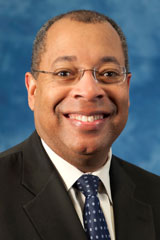
Dr. Christopher T. Jones is corporate vice president and president, Northrop Grumman Technology Services, a recognized leader in integrated logistics; sustainment; modernization; defense, health, civil and government services; and training solutions. Jones is a member of the company’s Corporate Policy Council.
Jones leads businesses for approximately 14,000 employees at more than 400 locations throughout the United States and in 16 countries, supporting a diverse customer base, including: the U.S. departments of Defense, Energy, Homeland Security, State and Interior; NASA; the U.S. Postal Service; and the Virginia Information Technologies Agency. The sector provides life-cycle solutions, logistical and training support, quick-reaction capabilities, sustainment, modernization, infrastructure and range operations that are integral to national and global security.
Previously, Jones was corporate vice president and president of Northrop Grumman Technical Services, a sector that was integrated into Northrop Grumman Technology Services in January 2016. Jones also served as sector vice president and general manager of Northrop Grumman Technical Services’ integrated logistics and modernization division.
Jones joined Northrop Grumman in 2004 as director of product support for the Airborne Early Warning Program. In addition to program execution, Jones provided technical leadership during aircraft design, development, production, and fielding.
Jones worked for Sikorsky Aircraft Corporation, where he led analysis, flight tests, and research on innovative rotorcraft technologies. He also was the company’s technology lead on the RAH-66 Comanche helicopter program and served as chief systems engineer for the Naval Hawk program.
In addition to his civilian career, Jones was an active duty Air Force officer, serving as a systems analyst at Wright-Patterson Air Force Base, Ohio, where he performed analysis on foreign ballistic missile and space systems. He was a member of the Connecticut Air National Guard for 14 years, serving as the chief of maintenance for the 103rd Air Control Squadron. He participated in military deployments including Operation Noble Eagle and Operation Enduring Freedom. Jones retired from the Air Guard in 2011.
Jones earned a bachelor’s degree in aerospace engineering from the Georgia Institute of Technology. He earned two master’s degrees in aerospace engineering and engineering management from the University of Dayton and a doctorate degree in aerospace engineering from the University of Maryland. Jones serves on the board of directors for the National Action Council for Minorities in Engineering and on the board of visitors for the University of Maryland A. James Clark School of Engineering, the Georgia Tech Advisory Board, and the Air Force Association Board.

Dr. Norris J. Krone, Jr. received a B.S. and Ph.D. in aeronautical engineering from the University of Maryland, and a master’s degree from the Air Force Institute of Technology. He is a member of the Tau Beta Pi Honorary Engineering Fraternity. He served as a fighter pilot in the Air Defense Command of the Air Force and is a veteran of over 200 combat missions as a forward air controller during the war in Vietnam, where he received the Distinguished Flying Cross and the Bronze Star by the USAF. He has flown over twenty different aircraft including nearly all types. He served as a member of the NASA Aerospace Safety Advisory Committee and Chairman of its Aeronautics Working Group; and as the Chairman of the Flight Research Subcommittee under the NASA Aeronautics and Space Transportation Technology Advisory Committee. He is a past Chairman of the Aeronautics National Policy Group of the AIAA’s Public Policy Committee, and for several years had the responsibility for developing and presenting AIAA’s testimony to both the United States Senate and House of Representatives.
As a previous Director of the Air Vehicle Technology Office of the Defense Advanced Research Projects Agency (DARPA), he was directly responsible for major innovations of aeronautical and tactical technology. Dr. Krone personally developed and verified technical principles that made possible the forward swept wing aircraft concept, and then while at DARPA initiated and managed the X-29A flight demonstrator program. For these efforts, Aviation Week recognized him as a major contributor to the Aeronautical Sciences and the American Institute of Aeronautics and Astronautics (AIAA) honored him with its Aircraft Design Award for an original concept that led to a significant advancement in aircraft design and technology. Dr. Krone was also responsible for or contributed significantly too many other developments in aeronautics technology, including the X-Wing Aircraft, the Advanced Tactical Cruise Missile, the no-tail rotor helicopters, several unmanned air vehicles (UAV’s), and Reconnaissance Systems involving tactical aircraft and sensors.
Dr. Krone is currently the President and Chief Executive Officer of the University Research Foundation, which was founded in 1981 by the University of Maryland. A principal activity of the organization is the operation of three flight research aircraft including a Piper Aztec, a Cessna 402, and a Piper Turbo Arrow. Dr. Krone founded and leads the Maryland Small Aircraft Laboratory—an alliance of 22 organizations including the States of Maryland, Delaware, and New Jersey—sponsored by NASA.
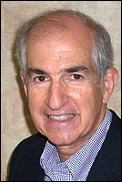
Bernard S. Loeb retired in 2001 after having worked for 24 years in various positions at the National Transportation Safety Board, the Federal Government agency responsible for the investigation of transportation accidents. Prior to his retirement, Loeb was the director of the Office of Aviation Safety – the office responsible for the investigation of all civil aviation accidents that occur in the United States. His office also participated in the investigation of all air carrier accidents and major incidents involving US airlines that occurred outside the US. Loeb directed the investigation of some of the highest profile accidents in the history of the NTSB. These included the crash into the Atlantic Ocean of TWA flight 800 following an explosion in the center-wing fuel tank of a Boeing 747 and the crash of ValueJet flight 592 because of a fire in the cargo compartment. Loeb was also responsible for demonstrating that the crashes of two Boeing 737s and the near crash of a third in the 1990s were the result of a design flaw in the 737 rudder control system.
Fundamental changes in air transport safety resulted from findings and recommendations emanating from these investigations. Prior to heading the Office of Aviation Safety, Dr. Loeb was the director of the Office of Research and Engineering at the NTSB. This office included the flight recorder laboratory, the metallurgical laboratory, the fire and explosives group, and the vehicle performance division.
Prior to joining the NTSB, Loeb worked in wind tunnel facilities at David Taylor Model Basin and the Naval Ordinance Laboratory, where he performed theoretical research on laminar boundary layers. He also did aeronautical research at the Lockheed Missile and Space Division in Palo Alto, California and the General Electric Space Sciences Laboratory in King of Prussia, Pennsylvania. Dr. Loeb was the recipient of numerous awards during his tenure at the NTSB, including the Chairman’s award, the highest award presented to its employees by the NTSB. He was also twice the recipient of the Senior Executive Service, Distinguished Presidential Rank Award, an award approved by the President of the United States.
Dr. Loeb received a bachelor of science in aeronautical engineering from the University of Maryland in 1960. He then received a master of science in engineering in 1964 and a doctor of science in engineering in 1966 from the George Washington University.
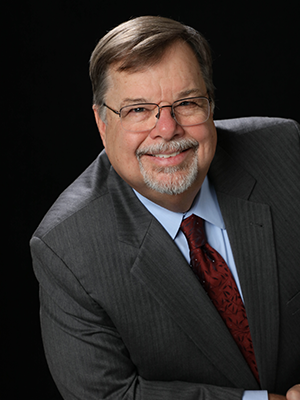 Ronald Luzier has over 40 years of experience in the design, analysis, manufacturing, and testing of aerospace systems.
Ronald Luzier has over 40 years of experience in the design, analysis, manufacturing, and testing of aerospace systems.
One of three founders of Swales Aerospace, he helped build the company to a staff of 1,000 with revenue of $200M. He managed technical teams at Swales in support of the Shuttle High Energy Astrophysics Lab and the Gamma Ray Observatory, building thousands of heat pipes, hundreds of composite structural panels, dozens of advanced thermal management systems, and flight mechanisms, and six spacecraft for NASA Goddard.
Swales Aerospace was acquired by ATK in 2007. Mr. Luzier established Potomac Technology Ventures LLC in 2008 to offer consulting services to select clients such as The Aerospace Corporation, and joined the University of Maryland Dingman Center for Entrepreneurship’s Capital Access Network to mentor and invest in startup and early-stage technology companies.
In 2013, Mr. Luzier joined with two partners to found MetiSpace Technologies—a company that develops ground software systems for NASA projects—and served as Executive Vice President and Chief Operating Officer until his retirement in 2018.
Mr. Luzier began his career performing structural analysis for programs such as the Applications Technology Satellite, the Nimbus satellite, the Hubble Space Telescope, and OSS-1. He was a member of the inaugural group of coop students at the University of Maryland College of Engineering, receiving his B.S. in aerospace engineering in 1972. He served on the Board of Governors of the Aerospace Industries Association for seven years and has been an AIAA member for 50 years.
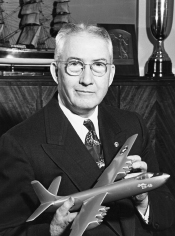 Aviation pioneer Glenn L. Martin was instrumental in providing funding to support education in the aeronautical sciences at the University of Maryland. In recognition of his philanthropic gifts and pioneering spirit in the field of aeronautics, the University of Maryland in '49 designated the College of Engineering as the Glenn L. Martin College of Engineering and Aeronautical Sciences. This name again changed in '55 when the engineering building and those of chemistry, mathematics and physics were designated the Glenn L. Martin Institute of Technology.
Aviation pioneer Glenn L. Martin was instrumental in providing funding to support education in the aeronautical sciences at the University of Maryland. In recognition of his philanthropic gifts and pioneering spirit in the field of aeronautics, the University of Maryland in '49 designated the College of Engineering as the Glenn L. Martin College of Engineering and Aeronautical Sciences. This name again changed in '55 when the engineering building and those of chemistry, mathematics and physics were designated the Glenn L. Martin Institute of Technology.

David G. Matuska is Manager of Engineering System Safety at Sikorsky Aircraft Corporation. In this role, Matuska provides Engineering leadership for all of Sikorsky’s efforts to develop and implement safety technologies and to improve operational flight and maintenance procedures to mitigate the risk of accidents for Sikorsky’s current and future helicopter fleet.
Mr. Matuska received his BSAE Engineering in 1981 and his MSAE in 1983, both from the University of Maryland. He is the very first graduate of the Alfred Gessow Rotorcraft Center. He joined Sikorsky Aircraft in 1983, and since has been actively involved in all aspects of rotorcraft research and development including rotor design, structural analysis, structural test, rotor test, composite material applications, dynamics, wind tunnel testing and flight simulation. Matuska is the inventor for eleven patents pertaining to rotorcraft technology with additional patents pending that are specifically focused on safety technologies. He has been a key technical contributor for numerous rotorcraft research programs to include the Integrated Technology Rotor, the Viscous Lead-Lag Damper Development, Rotor and Transmission Diagnostics, and the Variable-Diameter Tiltrotor.
In addition, as Program Manager, Mr. Matuska is responsible for the successful execution of multiple advanced technology research programs to include NASA’s Rotorcraft Technology Development Program, DARPA’s Variable-Diameter Tiltrotor Program, the Army’s Variable Geometry Advanced Rotor Technology Program, and NASA’s Revolutionary Concepts Program. He also served as Sikorsky’s Manager of Technology Integration and Planning with responsibility for the company’s entire Internal Research and Development Portfolio. In 2005, Matuska accepted his current position as Manager of Engineering System Safety, where he enjoys the opportunity to apply both his technical expertise and his flying background toward a long time passion for safety.
Mr. Matuska has been a long time and active member of the American Helicopter Society, where he has authored numerous technical papers and served as an AHS Northeast Region officer, Lichten Competition Chairman, and AHS Forum Technical Chairman. Currently he is the Deputy Director of System Engineering on the AHS Technical Council where he manages the Health and Usage Monitoring Technical Committee and where he has recently established two new international technical committees in the areas of Systems Engineering and Safety. He also serves on the AHS Board of Directors as the Northeast Region Vice President responsible for one of the largest and most active AHS Chapters. Matuska is also a licensed helicopter and fixed wing pilot with over 34 years of flight experience.

John Miller is the Director of the U.S. Army Research Laboratory, the Army’s premier laboratory for basic and applied research and analysis. ARL conducts research and analysis in weapons and materials, sensors and electron devices, computational and information sciences, human research and engineering, vehicle technology, and survivability and lethality analysis. ARL’s Army Research Office executes the Army extramural basic research program in scientific and engineering disciplines. The Laboratory consists of approximately 2000 military and civilian employees with an annual revenue of over $1B. Under Mr. Miller’s leadership, the laboratory has received numerous awards and recognition, including two Research Laboratory of the Year Awards (2004 and 2006), and 10 Army Greatest Invention Awards (2003, 2004, 2005 and 2006). From 1992 until his assignment as ARL Director in March 2003, Mr. Miller served in a number of management and leadership positions in ARL.
He was the ARL Associate Director for Plans, Programs, and Budget with responsibility for strategic and operational planning, revenue allocation, and program formulation and direction. He held positions as Division Chief, Deputy Director, and Director of the Sensors and Electron Devices Directorate where he was responsible for directing basic and applied research in sensors and signal and image processing technologies. From 1971 through 1992, Mr. Miller held positions as Project Engineer, Branch Chief, and Deputy Laboratory Director of the U.S. Army Harry Diamond Laboratories.
During this time, he was responsible for research and development in radar fuzing, telemetry, battlefield radars, and automatic target recognition. From 1969 through 1971, Mr. Miller was a Project Engineer at the Pratt and Whitney Aircraft Company where he was responsible for design of components for advanced turbofan engines for the F14 and F15 aircraft. Mr. Miller holds a bachelor’s degree in aerospace engineering and a master’s degree in mechanical engineering, both from the University of Maryland. He is a past recipient of the U.S. Army Research and Development Achievement Award (1980), the Army Superior Civilian Service Award (2003), and Presidential Rank Award (2007).
 Daniel Newman is a Boeing Senior Technical Fellow in Aircraft Configuration Development and currently serves as the Chief Engineer for Advanced Vertical Lift, in the Phantom Works Division of Boeing Defense Space & Security.
Daniel Newman is a Boeing Senior Technical Fellow in Aircraft Configuration Development and currently serves as the Chief Engineer for Advanced Vertical Lift, in the Phantom Works Division of Boeing Defense Space & Security.
He was an architect of the Transformational Vertical Flight Workshops that catalyzed the urban air mobility and electric VTOL initiatives. He chaired the NATO Industry Advisory Group (NIAG) Study Groups SG-219 (Next Generation Rotorcraft Capabilities), SG-239 (Integrated Sustainability for the Next Generation Rotorcraft), and SG-266 (Joint-Domain NATO Rotorcraft Interoperability and Survivability in a Peer Nation Threat Environment). He also served on National Academies Panels on Propulsion Sciences (2020) and Maneuver (2018).
While serving the U.S. Department of Defense as a Program Manager at the Defense Advanced Research Projects Agency, he was responsible for a variety of advanced technology developments in vertical flight technology, unmanned aircraft, high-fidelity physics-based modeling, sensors, airspace network and architecture, and aircraft survivability.
He is a Fellow of the American Institute of Aeronautics and Astronautics (AIAA), and a Technical Fellow and an Honorary Fellow of the Vertical Flight Society (VFS). Mr. Newman was an Adjunct Professor (ME) at the University of Pennsylvania, a Lecturer at Howard University, and mentors FIRST Robotics Teams.
He received his Bachelor of Science in mechanical engineering from the Sibley School at Cornell University and his master’s in aerospace engineering from the Alfred Gessow Rotorcraft Center at the University of Maryland where he was named a Distinguished Aerospace Engineering Alumnus. He has a recurring column in Vertiflite magazine ‘Coming to Terms.’
 George Orton has spent over 39 years working for the Boeing Company/McDonnell Douglas Corporation. He has served as a senior engineer, chief engineer, director of technology, and director of the space programs subdivision. His projects included the Shuttle Aft Propulsion System, Space Station propellant tanks, and truss structure and propellant tanks for the Peacekeeper Stage IV. Orton is an Associate Fellow of the American Institute of Aeronautics and Astronautics.
George Orton has spent over 39 years working for the Boeing Company/McDonnell Douglas Corporation. He has served as a senior engineer, chief engineer, director of technology, and director of the space programs subdivision. His projects included the Shuttle Aft Propulsion System, Space Station propellant tanks, and truss structure and propellant tanks for the Peacekeeper Stage IV. Orton is an Associate Fellow of the American Institute of Aeronautics and Astronautics.
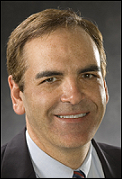
Mark B. Tischler is an Army Senior Technologist (ST) at the Army Aeroflightdynamics Directorate located at the Ames Research Center. He is closely involved in the strategic planning of future Army rotorcraft research programs. Dr. Tischler also leads the Flight Control Technology group, which conducts research in handling qualities and flight control with application to manned and unmanned aircraft and rotorcraft.
Dr. Tischler received a B.S. (1978) and M.S. (1979) in Aerospace Engineering from the University of Maryland. His MS thesis work, under the guidance of Professor Jewel Barlow, involved the prediction of spin and recovery characteristics of general aviation aircraft. He earned his Ph.D. from the Department of Aeronautics and Astronautics at Stanford University in 1987.
Dr. Tischler led development of CIFER®and CONDUIT®, two widely used software tools for conducting aircraft system identification and flight control system design optimization. Dr. Tischler is widely consulted for flight control expertise on numerous US aircraft programs, including his most current work in support of the Army Armed Reconnaissance helicopter, Navy unmanned Fire Scout helicopter, and Boeing 787. He represents Army research interests in interagency and international cooperations, including as US Technical Project Officer for the US/Israel Memorandum of Agreement. Dr. Tischler has also served as primary research advisor for 27 Masters and PhD students that have conducted their thesis work under his guidance.
Dr. Tischler has authored or co-authored over 100 technical papers and two highly respected books, including the recently published “Aircraft and Rotorcraft System Identification” (Tischler and Remple, AIAA, 2006). He has won numerous awards from the US Army and the NASA for his work in rotorcraft flight dynamics and control, including most recently the 2007 AIAA Aerospace Software Engineering Award for developing CONDUIT and achieving its acceptance by the aerospace industry; and 2007 Army Research and Development Achievement Award for his work in system identification. He is an Associate Fellow of the AIAA was recently named a Technical Fellow of the American Helicopter Society.
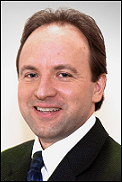
Michael S. Torok, Ph.D., is Chief Engineer, Maritime Programs for Sikorsky Aircraft Corporation. Dr. Torok has been in this position since October 2005. In this role, Dr. Torok is responsible for all technical aspects of the Maritime product line, including customer interface, requirements development and technology insertion, proposals, technical execution of development and sustaining programs, production and fleet support activities. Maritime products include the U.S. Navy MH-60R and MH-60S platforms, international S-70B platforms (Singapore, Turkey), and the Maritime H-92 platform, specifically the Canadian Maritime Helicopter Program (CH-148 Cyclone). Prior to this position, Dr. Torok held positions as Director, System Engineering & Technology, Director, Engineering Sciences, Chief of Dynamics, Manager of Advanced Rotor Active Control Programs and Supervisor of Aerodynamic and Aeroacoustic Methods.
Dr. Torok holds a bachelor of science degree in mechanical engineering from Cornell University, a master of science degree in aerospace engineering from the University of Maryland and a Ph.D. in aerospace engineering from the University of Maryland.
Dr. Torok was a recipient of the U.S. Army Distinguished Rotorcraft Fellowship and was a recipient of the American Helicopter Society's (AHS) Vertical Flight Foundation Fellowship. He was awarded the Francois Xavier Bagnoud (young engineer) award by AHS and the Gruppo Agusta International Award as part of the Sikorsky / USG / ZFL Individual Blade Control Team. He has served on the AHS Aerodynamics and Education Committees, as Technical Chairman of an AHS Aeromechanics Specialist Conference, as the AHS, NE Region Vice-President and as the Director of the AHS Technical Council. He currently serves on the AHS Board of Directors. He is also a member of the National Academies, Technical Advisory Board for the ARL Vehicle Technology Directorate. He has been inducted into the University of Maryland, Aerospace Engineering, and Academy of Distinguished Alumni. He is author of multiple technical papers and publications and holds seven patents.

Mr. Chris Van Buiten is the Vice President of Technology and Innovation at Sikorsky Aircraft, where he runs the Sikorsky Innovations group responsible for maturing next-generation technologies including X2 technology™, active rotor, and autonomy, as well as defining next-generation products.
Mr. Van Buiten joined Sikorsky in 1989 where he has been engaged in the conceptual and preliminary design of Sikorsky products including the S-92® commercial transport, the CH-53K heavy lift helicopter, and the UH-60M BLACK HAWK helicopter, as well as several advanced concepts.
He has served as Chief of Preliminary Design and Manager of Advanced Design and has led Sikorsky’s Strategic Planning group. Chris led Sikorsky’s acquisition of the PZL Mielec Aircraft Company in Mielec, Poland. He has also served as a Technical Fellow for Advanced System Design.
Mr. Van Buiten was a Glenn L. Martin Aerospace Scholar at the University of Maryland, where he received a bachelor of science in aerospace degree in 1989. He received a master of science in system design and management from the Massachusetts Institute of Technology and Sloan School of Business in 1999.

Dr. David Van Wie became the Mission Area Executive for the Precision Strike Mission Area of the Johns Hopkins University Applied Physics Laboratory on June 27, 2014. Dr. Van Wie is responsible for strategic planning, execution, and performance of approximately $100M in annual funding in programs addressing integrated strike, air dominance, and electronic attack. As the nation’s largest University Affiliated Research Center, APL performs research and development on behalf of the Department of Defense, the Intelligence Community, National Aeronautics Space Administration, and other federal agencies. The Laboratory has more than 5,000 staff members who are making critical contributions to a wide variety of nationally and globally significant technical and scientific challenges.
Prior to his current appointment, Dr. Van Wie served as the Chief Technology Officer for the mission area focusing on technology development supporting asymmetric multi-domain system concepts for use in Anti-Access/Area-Denial (A2/AD) environments. He also served on the Air Force Scientific Advisory Board where he led a science and technology quality review of the Air Force Research Laboratory and conducted studies on advanced weapons, virtual training, and space launch vehicles. Dr. Van Wie has served on National Academies studies addressing a wide range of complex topics such as Conventional Prompt Global Strike, Civil Aeronautics, and Future Air Force Needs for Survivability, Boost-Phase Missile Defense, Reusable Booster Systems, and Air Force Development Planning.
Dr. Van Wie is an active member of the U.S. science and technology community, and has published more than 140 papers in the fields of high-temperature fluid dynamics, plasma aerodynamics, and hypersonic air breathing propulsion systems. He holds a research faculty position in the Department of Mechanical Engineering at Johns Hopkins University, and is currently serving on the Aeronautics and Space Engineering Board of the National Academies National Research Council. Dr. Van Wie is a fellow of the American Institute of Aeronautics and Astronautics.
Dr. Van Wie has lectured extensively in the Department of Aerospace Engineering at the University of Maryland in the areas of hypersonics, fluid dynamics, and space propulsion. He has been recognized for sustained contributions by the Joint Army, Navy, NASA, and Air Force Air breathing Propulsion Subcommittee, and is a recipient of the Air Force Award for Meritorious Civilian Service.
Dr. Van Wie earned his bachelor of science (summa cum laude), master of science, and Ph.D. degrees in aerospace engineering from the University of Maryland, as well as a master of science degree in electrical engineering from Johns Hopkins University.

Dr. James Wang has an insatiable talent and passion for aeronautics. He started flying and building his own model aircraft designs since 12 years old. James went on to earn a B.S. degree in aeronautical engineering and a second B.S. degree in electrical engineering, both from M.I.T., under the guidance of Professors Wesley Harris, Norman Ham, and Rene Miller. For his M.I.T. thesis with Professor Miller, he designed and built an electronic quad-feedback loop SAS (Stability Augmentation System) using analog devices and then successfully flight tested on his radio-controlled helicopter. He then went on to receive an M.S. and a Ph.D. from the Rotorcraft Center of University of Maryland, where he specialized in bearingless main rotor research under the guidance of Professor Inderjit Chopra. There, he developed an analysis to examine the aeromechanical effects of blade-to-blade dissimilarities, and contributed to the development of the UMARC comprehensive analysis code. His Ph.D. research demonstrated that while vibratory loads would increase with dissimilar blades, the regressing lag mode instability would actually decrease because of a sharing of energy amongst the lag modes.
Dr. Wang has been the lead author on over 30 technical papers. He has been awarded the American Helicopter Society (AHS) Forum Best Technical Presentation three times (‘93, ‘95 and ‘96). He has served on the AHS Dynamics Committee and as chair of the Dynamic Sessions at the AHS Forum, and as a member of the AHS Technical Council. He is also a member of the SAE Technical Council, and representing AgustaWestland as the governing board member of the European Union’s 1.8 billion Euro Clean Sky program.
Dr. Wang was at Sikorsky Aircraft for eighteen years where he was known as one of the most energetic and prolific technical experts in the areas of aeromechanics, ground test, flight test, and preliminary design. His technical contributions to the rotorcraft community included improving the state-of-the-art in comprehensive rotorcraft codes, validating vibratory loads reduction methodologies, devising aeroelastic instability alleviation, and leading many wind tunnel and full-scale rotor tests. He has led R&D on Variable Diameter Tiltrotor (VDTR), Comanche, UH-60 Black Hawk, S-92, and US Presidential VH-3 helicopter programs. His technical contributions were critical to the success of these landmark helicopters.
For his relentless dedication on the development and testing of the S-76 bearingless main rotor, which was the proof-of-concept demonstrator of the Comanche BMR, he received the NASA Technical Achievement Award and the George Mead Gold Award in 1993, which is the highest accolade from the United Technologies Corporation. The George Gold Mead Award is bestowed on a person or a team with the highest technological achievement within the 170,000 employees of the United Technologies Corporation.
Dr. Wang’s passion has always been in rotorcraft technology and pushing innovations, but his distinguished career in rotorcraft spans far beyond pure engineering. Dr. Wang has the rare talent to combine technical knowledge with business thinking, and bring people to collaborate to achieve a common goal. At Sikorsky, he was appointed a leadership position to lead strategic international business campaigns. His commitment and astute leadership led to the successful fruition of many billions of dollars of international contracts in his career.
Since 2007, Dr. Wang has held the strategic position of Vice President of Research & Technology at AgustaWestland. At AgustaWestland, Dr. Wang has created an Advanced Concept Group modeled after the famous Lockheed Skunkworks. He was responsible for all research and technology activities for AgustaWestland, and provides leadership and management of company-wide research programs; including active rotor, electric tail rotor, advanced materials, friendlier cockpit, a LIDAR proximity warning to improve safety, futuristic configurations, greener rotorcraft, and many more. Dr. Wang firmly believes in collaborations among rotorcraft industry, academia, and government agencies. His philosophy is that if we can collaboratively bring forth innovations, then the rotorcraft industry and society as a whole will benefit. For example, if a brownout solution can be found, or a quieter rotor blade developed, or a cleaner and lower CO2 propulsion system can be invented, then everyone benefits.
In 2013, WIRED Magazine named Dr. Wang “the Steve Job of helicopters” for his ability to think “out of the box” and pushing the technology boundaries by inventing and designing the AgustaWestland “Project Zero,” the world’s first all-electric VTOL technology demonstrator. Dr. Wang pulled together a team of 16 companies from three continents and created the Advanced Concepts Group inside AgustaWestland, and personally led 20 young and enthusiastic engineers to design, build, and test the Project Zero demonstrator, all within six months.
The key technology breakthroughs with Project Zero included: all-electric propulsion; direct motor drive with dual motors mounted on the same shaft, and no transmission; individual blade control for swashplateless flight control and vibration suppression; EMA (electro-mechanical actuators) for hydraulics-free fly-by-wire system; zero-emission rechargeable lithium battery energy source, with flexibility to hybridize with other energy sources in future (e.g. diesel engine, fuel cell); stability augmentation system (SAS) and autopilot control laws for a twin rotor-in-wing aircraft configuration, including collective and cyclic blade pitch and rotor tilting control.
Project Zero was unveiled to the world at the 2013 Paris Airshow. Its beauty and unique design caught the attention of the world by surprise. It earned a place in the 2014 Guinness Book of World Records, won the 2012 AgustaWestland Innovation Award, won the Finmeccanica 2012 Innovation Award of the year, and in 2013 received the highest accolade from the Italian Ministry of Science and Technology. The editors of Aviation Weeks & Space Technology have chosen the Project Zero as one of final nominees for the highly coveted 2013 Aviation Weeks Laureate Award. In 2014, Project Zero was awarded the prestigious Grover E. Bell Award by the American Helicopter Society and the AHMEC 2014 Achievement Trophy by the American Helicopter Museum and Education Center. The Royal Aeronautics Society selected the AgustaWestland Project Zero as the winner of 2014 RAeS Team Gold Award. Only seven Team Gold Awards have ever been given out in the history of RAes.
With the Project Zero, Dr. Wang has taught a generation of young rotorcraft engineers to believe in “anything that can be dreamed, can be built.”
Despite his busy schedule, Dr. Wang always finds time to lecture to high school and college students about the importance of studying science and technology, and acts as a mentor on career planning. He encourages companies to sponsor students in science and technology. AgustaWestland is sponsoring the 2014 AHS Student Design Contest with an RFP similar to the DARPA X-VTOL challenge.
In his position as the Vice President of Research and Technology, Dr. Wang was pursuing his first love – advancing the future of vertical flight technology. Wherever he works, his vision and leadership has been critical to moving the company and industry to develop innovations that can be integrated into the next-generation of vertical flight aircraft. Dr. Wang has supported and actively participated as a committee member, session chair, and organizer for the American Helicopter Society, the European Rotorcraft Forum, and the Asian Rotorcraft Forum. Dr. Wang is a truly global ambassador and promoter for vertical flight and his passion for rotorcraft has benefited the helicopter community for three decades. Dr. Wang's rotorcraft career continues today with the same vigor and enthusiasm as when he started building his first model helicopter.
As of February 9, 2015, AgustaWestland has appointed Dr. Wang as the Senior Vice President of Helicopters and Services Marketing. The company would like Dr. Wang to combine his vast knowledge of rotorcraft technology, products, and market to further enhance the company’s branding and business.

Dr. Yvette S. Weber serves as the Deputy Director, Armament Directorate, Eglin Air Force Base Florida. The 1,500+ person directorate executes a portfolio valued at more than $52B. The directorate develops, fields, and sustains our combat forces’ highest priority precision weapons, including AMRAAM, HTS, JASSM, MALD, MOP, JDAM, JPF, HTVSF, SDB, P5 CTS, QF-4, QF-16, BQM-167A, Medium Caliber Ammunition, legacy munition, CAD/PAD spares and commodity buys. She is responsible for every aspect of directorate operations – personnel, budget, execution, performance, and supportability.
Dr. Yvette S. Weber was born in Astoria, NY. She entered civil service in 1992 prior to completing her Ph.D. in Engineering from the University of Maryland. She has held various assignments in the Air Force Research Laboratory, Headquarters for Air Force Materiel Command, and at the Air Force Life Cycle Management Center. These assignments have spanned the spectrum of basic, applied, advanced technology research, development, and test; systems engineering policy; engineering leadership and management; and system program management across a wide variety of Air Force weapon systems. Prior to assuming her current position, Dr. Weber served as Director of the C-5 Developmental Systems Program Office, Mobility Directorate, Air Force Materiel Command, and Wright-Patterson Air Force Base Ohio.
EDUCATION
- 2002, Professional Military Education, Air War College, in seminar, Dayton Ohio
- 2000, Postgraduate Study, Engineering Management, University of Dayton, Dayton Ohio
- 1994, Doctor of Philosophy, Aerospace Engineering, University of Maryland, College Park Maryland
- 1990, Masters of Science degree, Aerospace Engineering, University of Maryland, College Park
Maryland
- 1988, Bachelor of Science degree, Aerospace Engineering, Polytechnic University, Brooklyn New
York
MAJORAWARDSANDDECORATIONS
- 2014 Air Force Meritorious Civilian Service Award, Department of the Air Force
- 2011 AFMC Katherine Wright Memorial Award
- 2008 Chief Engineer of the Year, Aeronautical Systems Center
- 2006 Achievement Award, Department of the Air Force
- 2005 Meritorious Civilian Service Award, Department of the Air Force
- 2001 Federal Women’s Program Achievement Award, AFRL
- 2000 Exemplary Civilian Service Award, Department of the Air Force
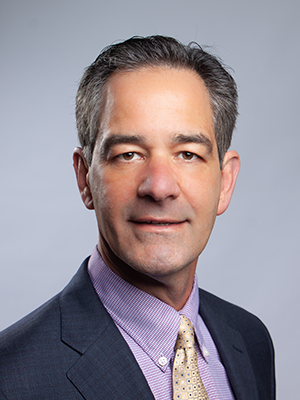 Kerry Wisnosky is an aerospace engineer with over 30 years’ experience providing leadership in developing space and missile technology for National Security, civilian agency, and commercial customers.
Kerry Wisnosky is an aerospace engineer with over 30 years’ experience providing leadership in developing space and missile technology for National Security, civilian agency, and commercial customers.
He currently serves as the Chief Operating Officer/Executive Vice President for Quantum Space, a commercial space company at the forefront of developing the infrastructure required to travel through and operate in deep space safely, reliably, affordably, and routinely.
Mr. Wisnosky co-founded and served as COO and CEO of Millennium Engineering and Integration, which specialized in providing space systems, engineering, and integration services to clients including Department of Defense, intelligence agencies, NASA, NOAA, and the Department of Homeland Security. Millennium merged with Quantitech in 2021 and was re-branded as Axient. The company has nearly 2300 employees, $550M in annual revenue, and 15 locations throughout the U.S. Prior to Millennium Engineering,
Mr. Wisnosky worked for Standard Missile Company (SMCo), ANSER, General Electric (GE), the Navy Surface Warfare Center (NSWC), and Martin Marietta. While at Millennium Engineering, SMCo, and ANSER, he played a key role in developing interceptor and kinetic warhead technologies for U.S. missile defense.
assionate about developing the next generation of engineers in our country, Mr. Wisnosky has been heavily involved in developing and implementing engineering research and internship programs at the high school, undergraduate, and graduate levels.
Mr. Wisnosky earned a bachelor’s degree in aerospace engineering from the University of Maryland and a Master of Science in mechanical engineering and applied mechanics from the University of Pennsylvania.
 Dr. Andreas (Andy) Bernhard is the Director of Aircraft Design at Sikorsky Aircraft. He is responsible for all technical aspects related to the design of blades, rotors, transmissions, airframes, and propulsion systems, across all platforms.
Dr. Andreas (Andy) Bernhard is the Director of Aircraft Design at Sikorsky Aircraft. He is responsible for all technical aspects related to the design of blades, rotors, transmissions, airframes, and propulsion systems, across all platforms.
 William Bissell was an instrumental member of the Lockheed Martin Aircraft Corporation for almost 39 years. He was an engineer and designer on such projects as Skunkworks, the U-2R, the A-12, the SR-71 and the XST. Bissell also designed and built the JetStar, a 10-passenger personnel transport for the Air Force which was later used as a Presidential plane.
William Bissell was an instrumental member of the Lockheed Martin Aircraft Corporation for almost 39 years. He was an engineer and designer on such projects as Skunkworks, the U-2R, the A-12, the SR-71 and the XST. Bissell also designed and built the JetStar, a 10-passenger personnel transport for the Air Force which was later used as a Presidential plane.



 Flavia De Veny is a General Management and Operations Executive who has successfully managed numerous divisions and businesses—from ground up builds to turnarounds—over the past 30 years. Her work has resulted in extensive revenue growth, numerous new market penetrations, and large-scale company expansions.
Flavia De Veny is a General Management and Operations Executive who has successfully managed numerous divisions and businesses—from ground up builds to turnarounds—over the past 30 years. Her work has resulted in extensive revenue growth, numerous new market penetrations, and large-scale company expansions.

 Bastian "Buz" Hello was an active management consultant to Rockwell International Corp and member of the aerospace community until his passing in
Bastian "Buz" Hello was an active management consultant to Rockwell International Corp and member of the aerospace community until his passing in 


 Ronald Luzier has over 40 years of experience in the design, analysis, manufacturing, and testing of aerospace systems.
Ronald Luzier has over 40 years of experience in the design, analysis, manufacturing, and testing of aerospace systems. Aviation pioneer Glenn L. Martin was instrumental in providing funding to support education in the aeronautical sciences at the University of Maryland. In recognition of his philanthropic gifts and pioneering spirit in the field of aeronautics, the University of Maryland in '49 designated the College of Engineering as the Glenn L. Martin College of Engineering and Aeronautical Sciences. This name again changed in '55 when the engineering building and those of chemistry, mathematics and physics were designated the Glenn L. Martin Institute of Technology.
Aviation pioneer Glenn L. Martin was instrumental in providing funding to support education in the aeronautical sciences at the University of Maryland. In recognition of his philanthropic gifts and pioneering spirit in the field of aeronautics, the University of Maryland in '49 designated the College of Engineering as the Glenn L. Martin College of Engineering and Aeronautical Sciences. This name again changed in '55 when the engineering building and those of chemistry, mathematics and physics were designated the Glenn L. Martin Institute of Technology.

 Daniel Newman is a Boeing Senior Technical Fellow in Aircraft Configuration Development and currently serves as the Chief Engineer for Advanced Vertical Lift, in the Phantom Works Division of Boeing Defense Space & Security.
Daniel Newman is a Boeing Senior Technical Fellow in Aircraft Configuration Development and currently serves as the Chief Engineer for Advanced Vertical Lift, in the Phantom Works Division of Boeing Defense Space & Security. George Orton has spent over 39 years working for the Boeing Company/McDonnell Douglas Corporation. He has served as a senior engineer, chief engineer, director of technology, and director of the space programs subdivision. His projects included the Shuttle Aft Propulsion System, Space Station propellant tanks, and truss structure and propellant tanks for the Peacekeeper Stage IV. Orton is an Associate Fellow of the American Institute of Aeronautics and Astronautics.
George Orton has spent over 39 years working for the Boeing Company/McDonnell Douglas Corporation. He has served as a senior engineer, chief engineer, director of technology, and director of the space programs subdivision. His projects included the Shuttle Aft Propulsion System, Space Station propellant tanks, and truss structure and propellant tanks for the Peacekeeper Stage IV. Orton is an Associate Fellow of the American Institute of Aeronautics and Astronautics.





 Kerry Wisnosky is an aerospace engineer with over 30 years’ experience providing leadership in developing space and missile technology for National Security, civilian agency, and commercial customers.
Kerry Wisnosky is an aerospace engineer with over 30 years’ experience providing leadership in developing space and missile technology for National Security, civilian agency, and commercial customers.